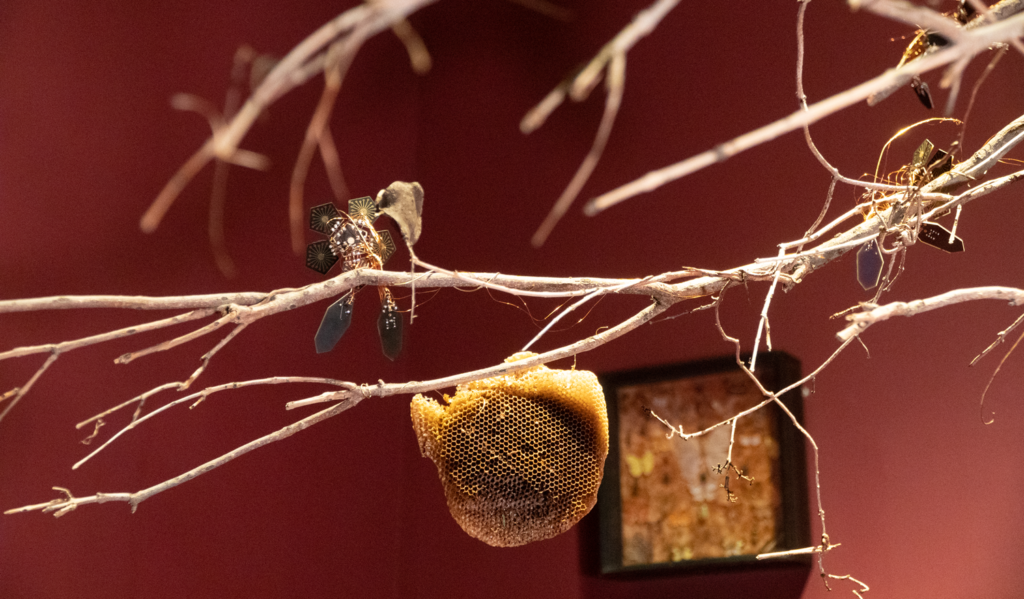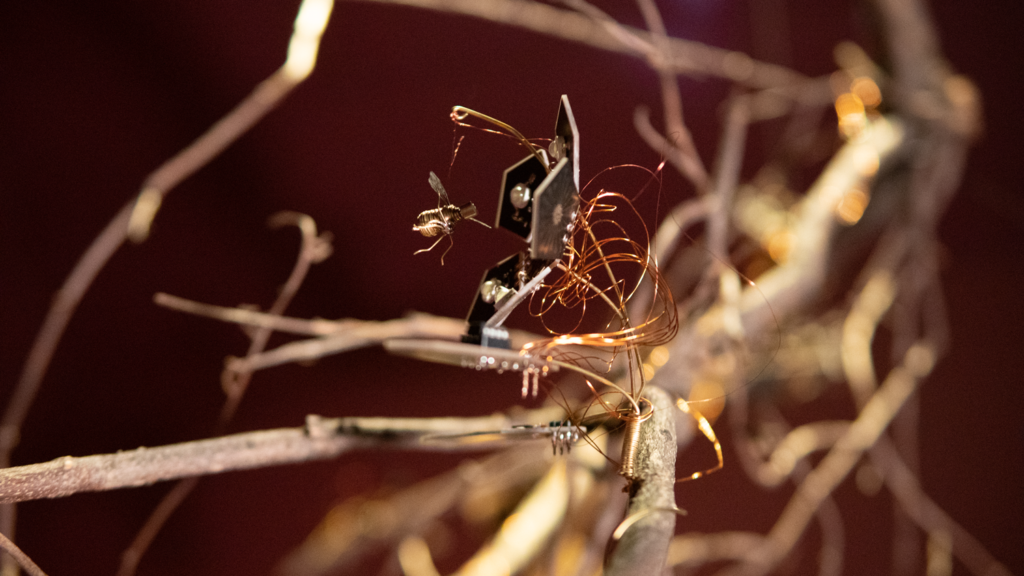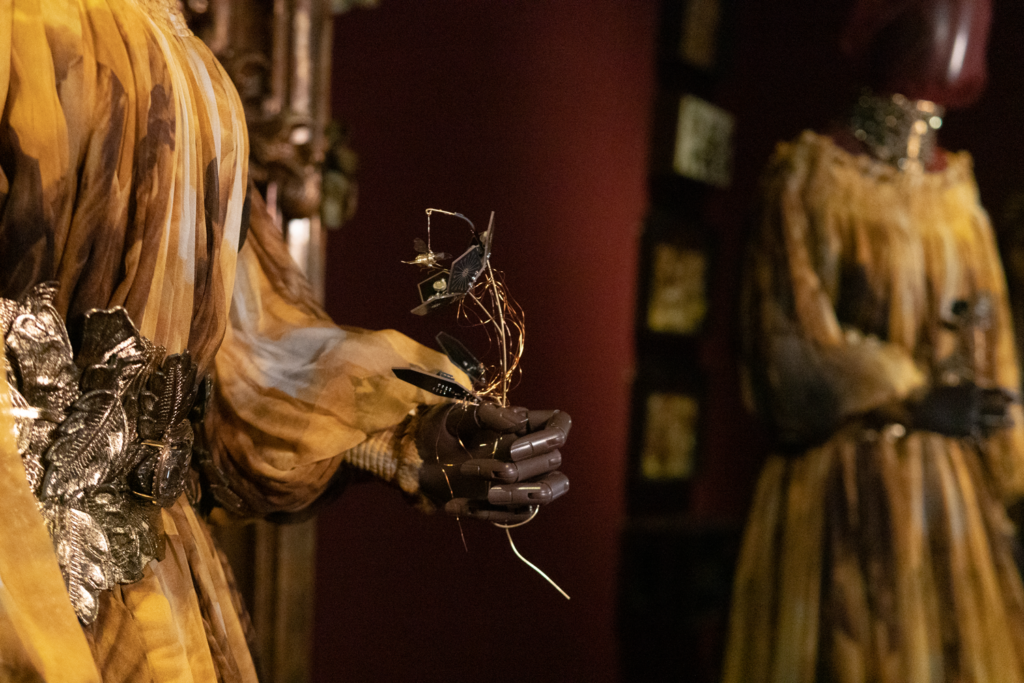
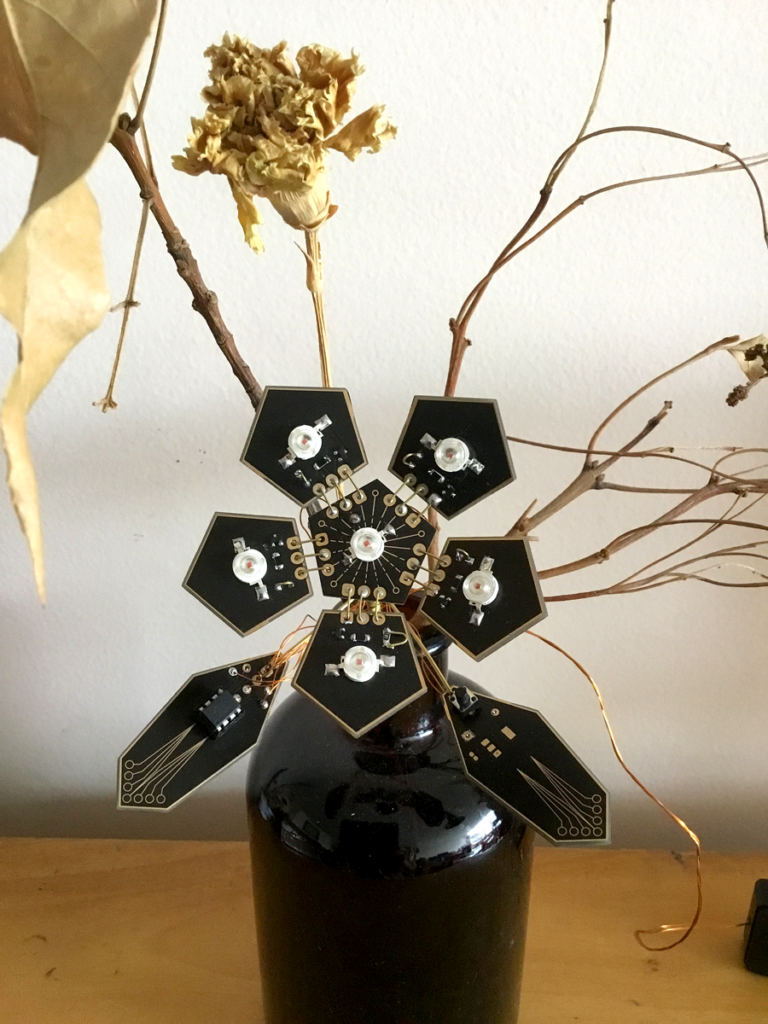
In Japanese Zen Buddhism, the practice of contemplation occurs in any activity that is performed: one meditates while sitting, walking, eating, at all times. Aesthetics are fundamental and significant as philosophy and practice, with a focus on personal and artistic development.
Within the various practices of contemplation, floral or plant arrangement is fundamental, as it recognizes nature in its pure expression of beauty and allows for the contemplation of its aesthetics without discriminating, appreciating life and decay. This ancient Zen art is called ikebana, which means “floral arrangement”.
For ikebana, the term “flower” is more of a concept or idea that encompasses everything that has an affinity with plants and the essence of the arrangement itself. Any branch, leaf, flower, root, stem, or moss can be used. Ikebana is not only the arrangement itself, but also the entire process that led to its creation, in meditative silence working with impermanence and the essence of nature to find the path or way of self-realization.
Each act in the arrangement and its variations comes from a tradition or school, and each element has a meaning that delves into the search for peace, harmony, and understanding. Nature, like the seasons, is constantly changing and its beauty extends to death, where decay becomes an aesthetic pleasure and holds meaning. The vases and other elements in the arrangement are fundamental and are meant to establish a symbolic dialogue among all the elements.
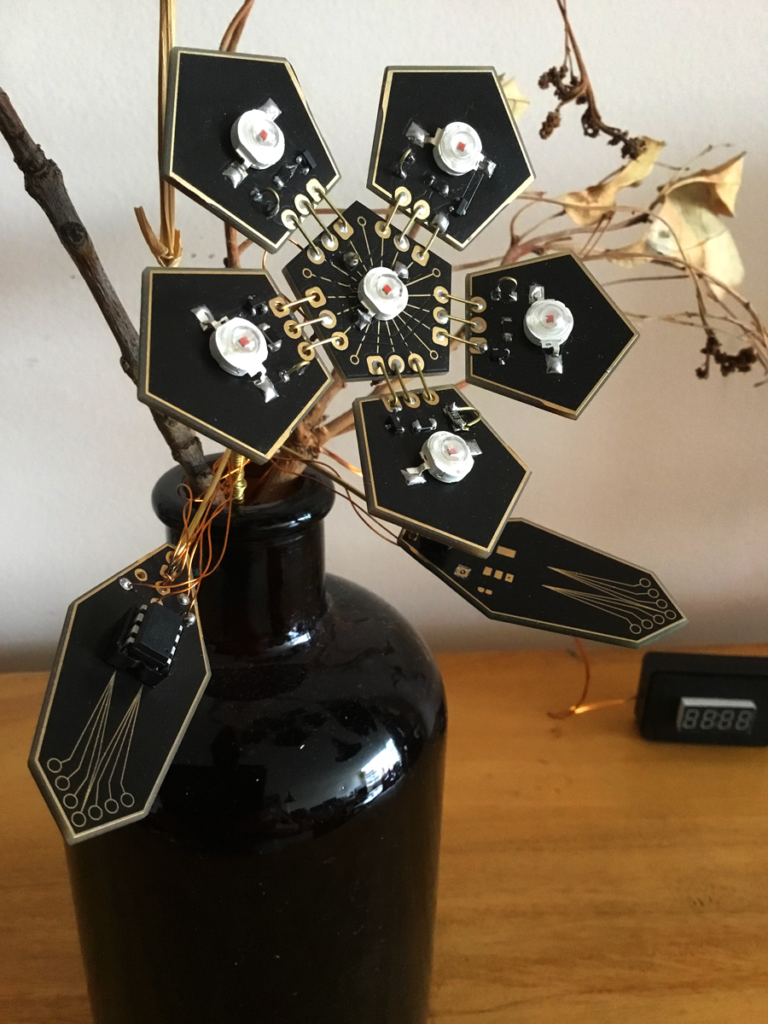
In our proposal of arrangements, we introduce the electronic element both at an aesthetic and functional level. Metaphors of electronics relate to energetic flows that resemble those of water, in their ability to conduct and transform.
Historically, electricity has been related to water due to its symbolic charge and similarity in activity processes, such as current generation and the way they flow. This relationship becomes evident in our arrangements, where the combination of electronic and natural elements creates a dialogue between technology and nature.
The e_kebana are arrangements that explore new forms of expression and relationship with the natural world through the combination of electronic and dry natural elements. This fusion gives rise to a dialogue between active energy flow processes and dry floral elements that symbolize the impermanence of nature, life, and death.
Through the combination of electronic flowers and natural dried elements, a contrast effect is created between the natural and the simulated, inviting us to question the dichotomies between the organic and the artificial. In this sense, e_kebana can be considered a kind of hybrid ontology that leads us to rethink the traditional limits of nature and technology.
By mimicking in a process of aesthetic and symbolic contemplation, e_kebana allows us to appreciate the complexity and beauty of the interaction between technology and nature. In this way, our arrangements invite us to reflect on our relationship with the environment and the role that technology can play in our interaction with the natural world.
Additionally, e_kebana arrangements are both luminous and therapeutic, promoting contemplation and relaxation through active bio-photomodulation with meditative frequencies.
E_kebana or electronic ikebana are a combination of modular electronic circuits, PCBs, and brass wire, with the morphology of a five-petal flower that alludes to Fibonacci mathematics present in nature. The petals are equipped with high-power 640nm red light spectrum LEDs and are interconnected to make them modular. One of the leaves contains a programmed microcontroller to control the light frequency of each petal, while the other leaf has a button to select a specific frequency. The chosen frequencies are in the audible range but are light-based, and the LEDs flash at high speeds to produce an aesthetic and symbolic effect in contemplating the arrangement.
Neurohacking and biohacking: Bio-photomodulation is a biological process that is activated by the specific use of a spectrum of light, in this case, red light. The light spectrum is not only visible to the sense of sight, but the organism perceives it in various ways. The mitochondria, a fundamental cellular organelle in human metabolism, is the power plant of cells, as it is responsible for the production of ATP energy.
Red and infrared light in the range of 600 to 800 nm generates more efficient activity of mitochondria in human cells, resulting in a number of reported health benefits in various studies. This therapy has been used continuously and effectively for decades, but it is only now that the cellular processes involved are starting to be understood. In the future, bio-photomodulation and other similar technologies may be used more widely as tools for human enhancement, which raises interesting ethical and philosophical questions about the limits and consequences of technological modification of human beings.
By modulating mitochondrial activity using red light, energy production in brain and neuronal cells can be improved, resulting in an improvement in cognitive function and learning ability. In addition, it has also been shown that bio-photomodulation can help in reducing pain, inflammation, and stress, making it a valuable tool for managing health and well-being.
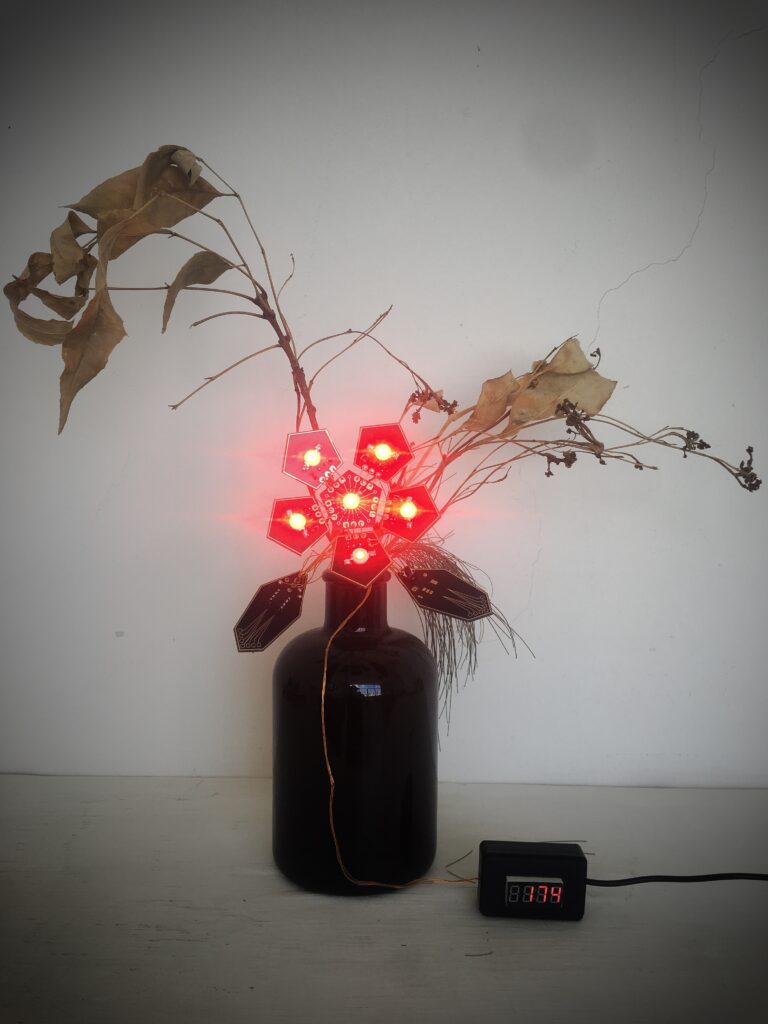
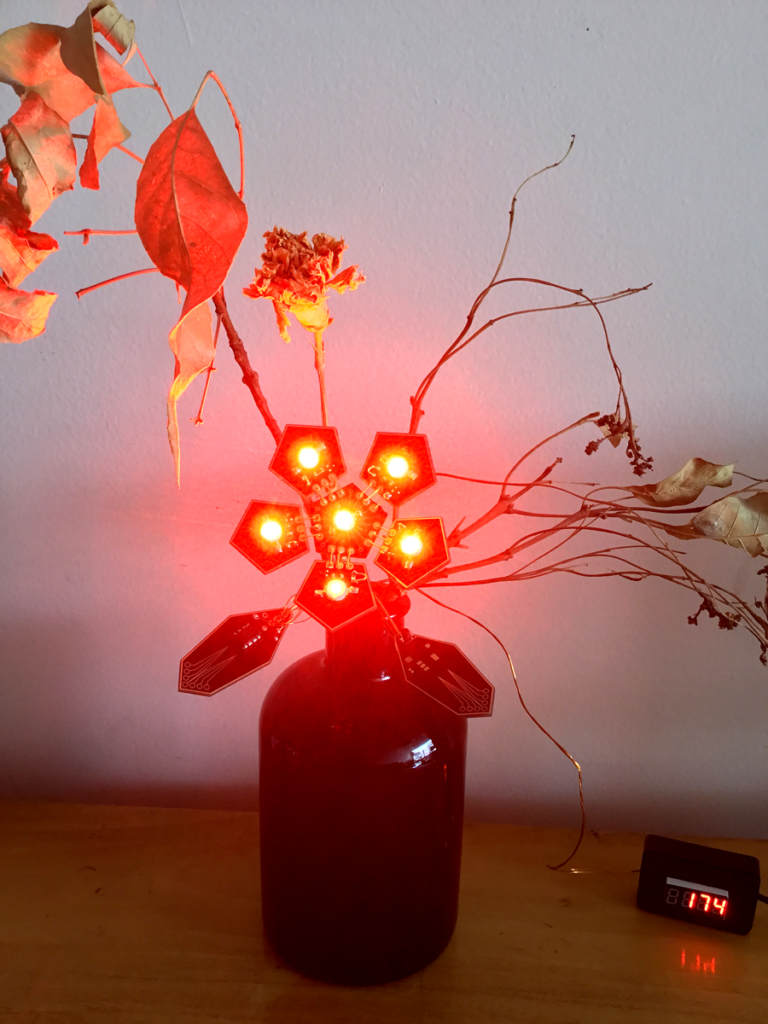

In the context of speculative realism, we can say that contemplative meditation, aided by technologies such as e-kebana, allows us to delve into a more intimate relationship with reality and with our own being. Light, as a form of subtle energy, has the ability to modulate and transform both metabolic and mental activity in our cells, suggesting a deep and mysterious connection between the material and the spiritual.
Through contemplation and interaction with the frequencies emitted by the petals of the e-kebana, we can access different states of consciousness and focus our attention on specific intentions that help us achieve greater harmony and balance in our body and mind. This practice allows us to experience reality in a more full and conscious way, and helps us understand that we are an integral part of an interconnected and dynamic universe.
“Thinner than water”
The revelation comes from research led by Andrei Sommer of the University of Ulm (Germany). Sommer’s team’s work is now focused on water inside the cell. Normally, the layer of water next to any solid object has a high surface tension, making it viscous. “It’s like molasses,” says Sommer.
His team discovered that when surface layers of water are illuminated with red light, the distance between each water molecule increases, making the liquid more “slippery”.
Mitochondria feed on an enzyme attached to their membranes. This enzyme rotates like a molecular turbine, and being surrounded by more liquid water should rotate more easily, generating more ATP.
As it is difficult to measure water inside a living cell, the team measured the effect of near-infrared light on thin layers of water by examining the friction of a diamond probe as it pushed through the water and towards a metal block.
Illuminating the water reduced the force needed to push the probe by 72%.
“It’s very significant,” says Horst-Dieter Försterling of the University of Marburg in Germany. “It’s the first explanation of how light might work.”
https://www.nature.com/articles/srep12029
‘Beauty: Antidote and Poison’
The first version of e_kebana was commissioned by Daniel Liebshon for the museography of Alexander McQueen’s exhibition ‘Beauty: Antidote and Poison’ at the Zapopan Art Museum.
The installation alludes to the life/death binary present in McQueen’s work, and is a kinetic, luminous, and sound work that functions as a shadow theater.
While ikebana is a Japanese floral arrangements that often use dry vegetation, this installation employed a jacaranda branch in which flowers constructed with purpose-designed electronic circuits were integrated. Each flower, pentagonal in shape with five petals in accordance with Fibonacci’s morphology, has a power LED in each petal. The leaves, in turn, include an Attiny microcontroller programmed with an algorithm that randomly triggers each of the LEDs. In front of the flower’s corolla is a mechatronic bee that flutters hypnotized by the light, whose shadow is projected on the walls vibrating in flashes. A mannequin holds one of the flowers in its hand.
The e_kebana work alludes to the aesthetics of death that endure over time, to the symbiosis of insects with flowers in the act of pollination, the synchrony of processes, and to the simulation of the living that emerges from the dead in the poetics of energy flow. The jacaranda died due to a parasitic organism, a creeper. The electronic flowers entwine in the dry branches like magnet cable orchids that flow with energy to feed them, the aesthetics of life in its energetic collapse in a speculative symbiosis.
